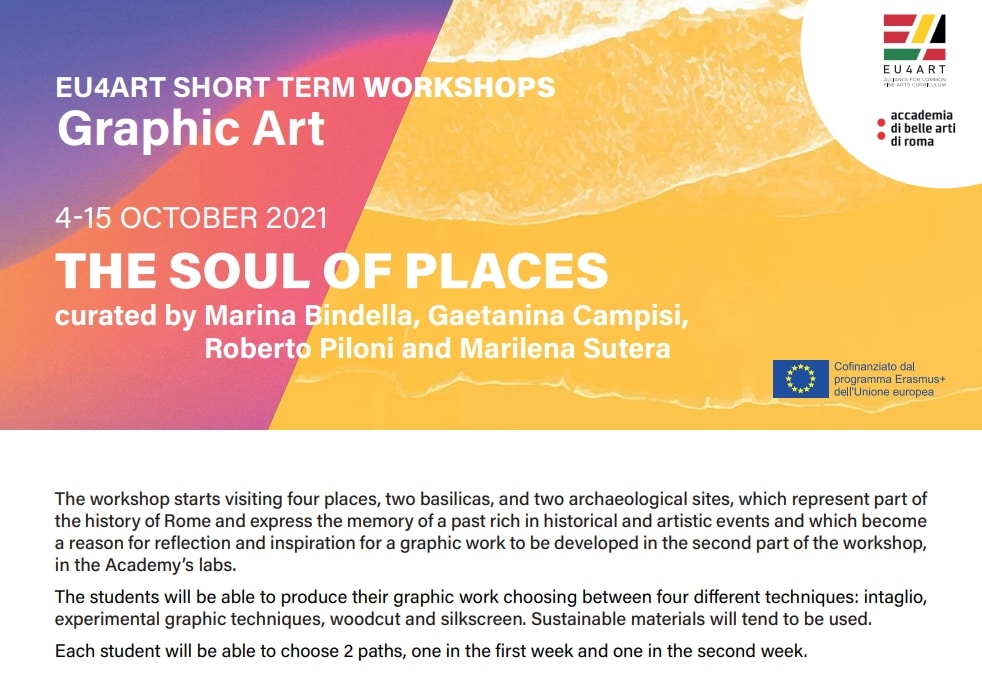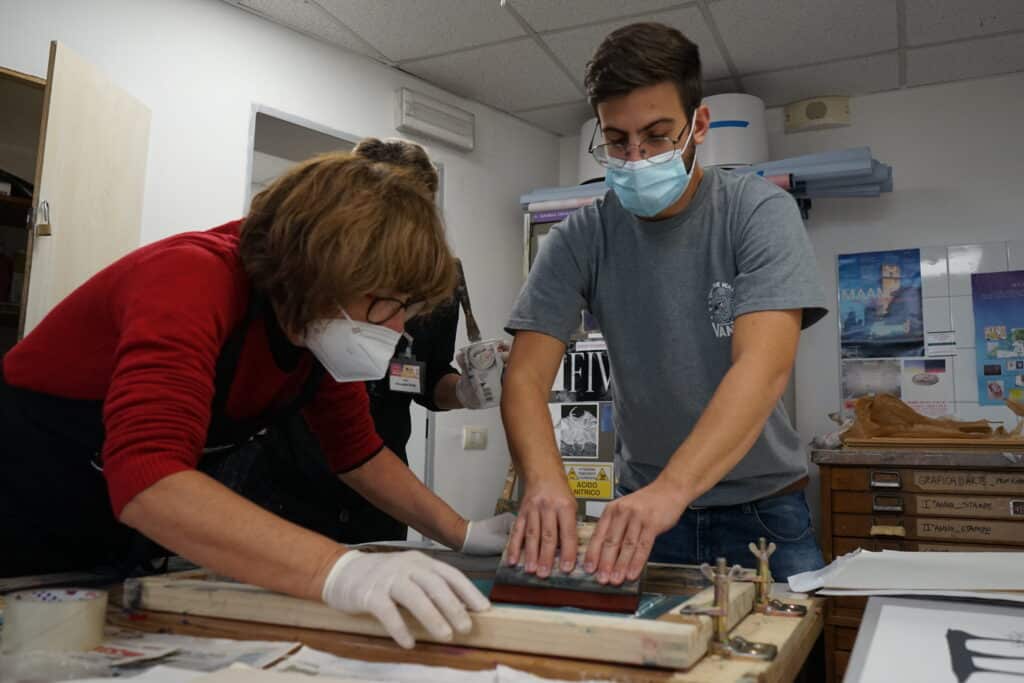The Graphic Art workshop started out with a tour of four points of interest of Rome, two basilicas and two archaeological sites. All of them represent an important part of the history of Rome and therefore became a reason for reflection and inspiration for a variety of graphic artworks, to be developed inside the Academy of Fine Arts of Rome’s facilities over the following days.
In each location the students met with a different professor, who explained them why they had chosen that particular monument, what the theme of their workshop was going to be and which printmaking techniques it would have involved.
They visited the Basilica of S. Maria in Trastevere with Professor Marina Bindella, the Baths of Caracalla with Professor Roberto Piloni, the Basilica of Saint Paul Outside the Walls with Professor Marilena Sutera and lastly they walked down a section of the Appia Antica with Professor Gaetanina Campisi.
A common thread among all four workshops was the focus on the layering of styles and the mixture of different elements and textures of various historical ages, an exceptionally evident feature in the city of Rome; this topic was to be observed and reflected upon with respect to the proposed techniques: woodcut reduction block printing, experimental chalcography, silk-screen printing and solar plate etching.
At the end of that first day the students were given some time to think about all the visual inputs they had received visiting all the different locations, before being asked to choose two out of the four workshop paths, and then return on site for some more field research the following day.
Through sketching, drawing, frottage-making and photography, they gathered and collected all the key elements that they needed to bring their project to life over the course of the weeks. The Academy’s labs were once again buzzing with creativity, the students discovering and experimenting with all the possibilities available for their practice.
On the final day of the workshop, all the students gathered together to browse through everyone’s work and see the final outcomes of the four workshops all lined up on the desks of Aula 11.

